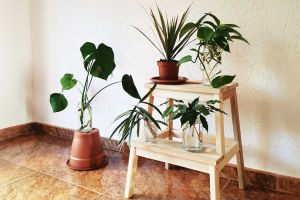Welcome to Our Propagation Adventure
Hello, plant lovers! Have you ever wanted to multiply your favorite flowers and plants without buying new ones? We’re excited to share detailed, easy-to-follow methods for propagating plants through seed sowing, cuttings, and division.
Together, we’ll learn how to expand your green family efficiently and enjoy the satisfaction of growing new plants from your existing ones. Ready to get your hands a little dirty?
Seed Sowing: Starting from the Beginning
Seed propagation is a classic and natural way to grow many plants. We start by selecting healthy seeds and preparing loose, well-draining soil. Some seeds need pre-treatment such as soaking or scarification to break dormancy and encourage germination. After sowing, it's important to keep the soil moist but not waterlogged, and provide the right temperature and light conditions. For example, many flower seeds prefer a warm and bright environment. While seed-grown plants may vary from their parents, this method is perfect for annual flowers and trying new varieties. Patience is key, as seedlings often take weeks to emerge and grow strong.
Cuttings: Growing New Plants from Plant Parts
Cuttings are a popular and efficient way to clone your favorite plants. We take healthy stems, leaves, or roots from the parent plant and place them in a suitable rooting medium like moist soil, sand, or perlite. Stem cuttings work well for herbs and shrubs, while leaf cuttings are common for succulents and African violets. Using rooting hormones can speed up root development. Cuttings should be kept in a warm, humid environment with indirect light until roots form, usually within a few weeks. This method produces genetically identical plants and often flowers faster than seed-grown ones.
Division: Splitting Plants to Multiply
Division is one of the simplest and most reliable propagation methods. We carefully separate a mature plant into smaller sections, each with roots and shoots, then replant them individually. This method works well for perennials, grasses, and some bulbs. Division not only multiplies plants but also rejuvenates crowded or overgrown specimens, encouraging healthier growth. It's best done during the plant's dormant or early growing season to reduce stress.
Tips for Successful Propagation
• Use clean, sharp tools to prevent disease transmission.
• Label your new plants to keep track of varieties and dates.
• Maintain consistent moisture and avoid direct harsh sunlight on young plants.
• Be patient and observe your plants closely for signs of rooting or growth.
• Adjust methods based on plant type; some may need more humidity, others more light.
Let's Multiply Our Green Friends!
Propagation is a rewarding way to deepen our connection with plants and grow our collections sustainably. We encourage you to try these methods and share your successes and challenges with us. What propagation techniques have worked best for you? Let's learn and grow together, turning our homes and gardens into flourishing green havens!
With care and practice, you'll soon enjoy the joy of watching new plants thrive, all started by your own hands. Happy propagating!

